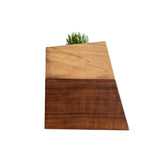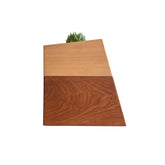Creating a Memorial Corner at Home for Your Beloved Pet
Introduction
When a pet passes, the whole house feels different. Their bed is quiet in the corner, the collar sits on the table, and the silence weighs a little more than it used to. For many of us, grief feels heavy partly because there isn’t a clear place to put it. One gentle way to cope is to create a small memorial corner at home—a spot that holds their memory and reminds you of the love you shared.
A memorial corner doesn’t need to be grand. It can be as simple as a framed photo with a candle beside it, or a small table with keepsakes, flowers, and their urn. What matters is that it feels personal, comforting, and meaningful to you.
In this guide, we’ll talk about why a memorial corner helps, how to set one up step by step, and what kinds of items you might include.
Why a Memorial Corner Matters
- Grief doesn’t follow rules. Some days you’re okay; other days it hits like day one. Having a physical place to pause and remember gives you a bit of steady ground.
- It gives grief a home. Instead of scattering things—collars in a drawer, toys in a box—you gather them in one spot.
- It creates a simple ritual. Lighting a candle or placing fresh flowers becomes a small act of remembrance.
- It keeps their presence visible. You’ll have a gentle reminder that their love is still part of your life.
- It sparks conversation. Family members—kids included—can sit by the corner and share stories.
- Think of it less as a “shrine” and more as a little corner of comfort—a soft landing place for your memories.
Choosing the Right Location
- There’s no single “right” spot. Pick somewhere that fits your home and your daily rhythm.
- A quiet living-room corner. Perfect if your pet always lounged near the family.
- A bedroom shelf. More private, if you like to reflect at the end of the day.
- Near a window. If they loved sunbathing, the natural light can feel meaningful.
- Garden or patio. If you prefer the outdoors, plantings and wind chimes can be beautiful.
- Wherever you choose, make sure it feels peaceful, easy to reach, and natural for you.
What to Include
- You likely already have most of what you need.
- Photos. A favorite picture—goofy grin, calm nap, or their best spot in the house.
- Urn or ashes bag. If you keep their ashes, this is a natural place for them.
- Keepsakes. Collars, tags, toys, blankets, even a food bowl.
- Candles or lights. A candle for evenings, or a small LED lantern for a steady glow.
- Plants or flowers. Live plants bring vitality; seasonal flowers add a fresh scent. Or use a vase or urn and place a plant on top of the ashes to symbolize vitality.
- Notes and letters. Keep a small notebook to write to them when you miss them.
- Art or crafts. Paw-print molds, a painting, or a child’s drawing.
Adding Personal Touches
Let the details reflect who they were.
- Loved the outdoors? Add a small stone, shell, or leaf from your walks.
- Playful soul? Include a tennis ball or a tiny toy.
- Comfort item? Drape their favorite blanket over the corner table.
- Creative? Start a scrapbook or a memory jar and drop in little stories over time.
Some families rotate items with the seasons—spring flowers, winter ornaments, holiday decorations—so the memorial grows with you.
Simple Rituals
A memorial corner means the most when you interact with it.
- Light a candle each evening. Even 30 seconds of quiet can help.
- Bring fresh flowers weekly. A small act that says, “I’m still caring for you.”
- Read a memory aloud. Share a funny or sweet moment whenever you gather there.
- Mark special dates. On a birthday or adoption day, spend extra time together at the corner.
No need for formality—the goal is to keep love visible in everyday life.
Involving Children and Family
- Grief touches everyone at home. Kids may not have the words for it yet, but this space can help.
- Encourage them to draw a picture and place it in the corner.
- Let them choose a toy or memento to add.
- Teach a simple phrase, like: “Thank you for being part of our family.”
- Adults can write letters, leave items, or tell stories. The corner becomes a shared place of love, not an isolated one.
Outdoor Memorial Corner
- Prefer the open air? A small outdoor memorial can be beautiful.
- Plant a tree or flower bed in their honor.
- Add a small bench or engraved stone.
- Hang a wind chime so the breeze becomes a gentle reminder.
- Use lanterns or solar lights for evenings.
- Nature often does the talking—growth, change, and renewal.
Be Flexible
Your memorial corner doesn’t have to stay the same forever. At first, you might keep every toy and blanket; later, you may find a simpler setup feels better. That’s okay. Grief changes, and your memorial can change with it.
Some people eventually pack the corner away when they’re ready; others keep it for years. Both choices are valid. The space is meant to help you heal, not hold you in place.
FAQ
Q1: Do I need my pet’s ashes to create a memorial corner?
A1: No. Ashes are optional. Photos, keepsakes, and a candle are more than enough to create a meaningful space.
Q2: What if I live in a small apartment?
A2: A shelf, nightstand, windowsill, or a decorated box can work perfectly.
Q3: Should I keep it forever?
A3: Not necessarily. Some people keep a corner for a few months, others for years. Follow what feels right.
Q4: Can I set it up outdoors?
A4: Yes. A garden, patio, or balcony is a lovely choice.
Q5: Is it normal to cry when I visit the memorial?
A5: Of course. Tears are part of healing. Over time, the same corner may bring more smiles than tears.
Conclusion
Creating a memorial corner isn’t about holding on to pain—it’s about honoring love. It turns grief into a gentle, everyday presence, gives you a place to pause, and reminds your family that the bond you shared doesn’t end.
Every photo, collar, and candle is more than an object—it’s a story, a laugh, a walk in the park, a paw on your leg. Keeping these things close brings their memory into your daily life, not just your heart.
If you’re grieving right now, you’re not alone. It’s okay to take a small step. A memorial corner can be that step—a quiet place to say, “You’re still with us.”









